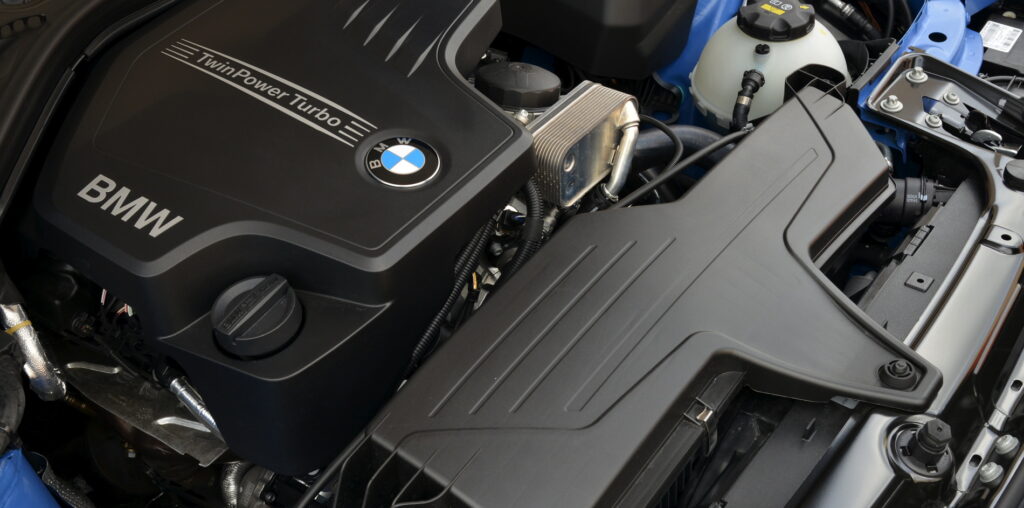The BMW N26 engine, often compared to its sibling, the N20, was an integral part of BMW’s push for more environmentally friendly powertrains back in the early 2010s. Introduced as a “SULEV” (Super Ultra Low Emissions Vehicle) variant of the N20, the N26 engine powered several BMW models from 2013 to 2016. Despite their similarities, the N26 has notable differences designed to meet stricter emissions regulations, particularly in states like California and New York, where tighter emissions standards apply.
In this article, we’ll explore the reliability, key differences between the N26 and N20 engines, recommended maintenance practices, and the pros and cons of owning a vehicle equipped with the N26 engine.
Key Differences Between the BMW N26 and N20 Engines


While the BMW N26 and N20 engines share a 2.0-liter inline-4 turbocharged configuration and many internal components, they differ primarily in emissions technology:
- Emissions Equipment: The most significant difference between the N26 and N20 is the emissions equipment. The N26 is classified as a SULEV engine, meaning it complies with much stricter emissions standards than the N20 (which is classified as ULEV – Ultra Low Emissions Vehicle). To achieve this, the N26 is equipped with additional emissions control components, such as larger catalytic converters, an electronic wastegate, and a modified PCV system.
- Fuel System: The N26 features metal fuel lines instead of the rubber ones found in the N20, and it includes a valve in the fuel tank venting system for leak testing.
- Software Tuning: The engine control unit (ECU) software is calibrated differently to optimize performance and emissions for the N26’s specific hardware.Warranty Coverage: Because of the N26’s emissions components, cars with this engine typically come with an extended emissions warranty, covering certain components for up to 15 years or 150,000 miles in states that follow California’s emissions standards.
Model Applications:


The N26 was exclusively available in 2013–2016 BMW models sold in emissions-restrictive states, including California, New York, New Jersey, and others. The N20, on the other hand, was more widely available across all U.S. states and internationally.
- 2012-2016 F30 328i / 328iX
- 2012-2016 F22 228i / 228iX
- 2014-2016 BMW 4 Series F32/F35/F36 428i SULEV
Despite these differences, both engines share the same power output: 241 horsepower and 258 lb-ft of torque, making performance indistinguishable under normal driving conditions.
BMW N26 Reliability
When it comes to reliability, the N26 inherits both the strengths and weaknesses of the N20, yet generally, the N26 is considered a reliable engine. Here are the common reliability factors:
- Timing Chain: While not as widespread as in the N20, timing chain problems can occur, leading to costly repairs. Regular oil changes and checking the chain tensioner can help prevent this. According to some owners, this issue typically manifests after 60,000 to 100,000 miles.
- Valve Cover and Oil Filter Housing Gasket Leaks: These are common issues in many BMW engines, including the N26. Replacing the gaskets is a relatively straightforward repair.
- High-Pressure Fuel Pump (HPFP) Failure: Though less common than in earlier BMW models, the HPFP can fail in the N26, leading to rough running or a no-start condition.
Maintenance Tips for the BMW N26


Proper maintenance is essential to ensure the longevity of the N26 engine. Here are the key maintenance tips and intervals for this engine:
- Oil Changes: Regular oil changes are crucial. BMW recommends oil changes every 10,000 miles, but many owners opt for 5,000-7,500-mile intervals, especially in harsh driving conditions. Use high-quality synthetic oil to keep the engine running smoothly.
- Timing Chain Inspection: Given the timing chain issues, it’s a good idea to have the chain and guides inspected at around 60,000 miles. If you hear a rattling noise coming from the engine, have it checked immediately.
- Cooling System: Keep an eye on the coolant levels and have the water pump and thermostat inspected during regular service intervals to avoid potential overheating.
- Emissions Components: Since the N26 has additional emissions equipment, it’s important to maintain these parts, especially for owners in SULEV states. Regularly inspect fuel lines, the catalytic converter, and the secondary air injection system.
- Gasket Replacements: Be proactive about replacing the oil filter housing gasket and valve cover gasket as they can wear out over time, leading to oil leaks.
- High-Pressure Fuel Pump: Stay vigilant for any signs of HPFP failure, such as rough idling or engine misfires. If the pump fails, it should be replaced under BMW’s extended emissions warranty if applicable.
Overall, the BMW N26 is a solid engine that offers a good balance of performance, fuel efficiency, and emissions compliance. There is on major recall which took place in 2013 and you can learn more about it here.

